|
by Marriott_Guy |
|
|
In 1982, Ultravision, a small electronics company based in Miami, advertised their upcoming Atari 2600 games Condor Attack and Karate
in the November issue of Electronic Games magazine. This full page ad caused quite a stir within the video gaming community, but this
wasn't due to the actual games being presented. The root was actually a small teaser drawing located at the bottom of the flyer
announcing a new state-of-the-art gaming machine - the Ultravision Video Arcade System. The artist's rendering of this new console piqued gamers interest across the board. The futuristic design was definitely appealing, with the built-in monitor being especially intriguing. Future print ads would reveal that the Ultravision VAS proposed to be much more than just a home arcade machine. "It's a COMPUTER, It's a COLOR TV, It's an ARCADE." was the tagline for the VAS. To say this was an ambitious undertaking for the time would be a severe understatement. Ultravision's intent was to combine a full-fledged 9" color television, complete with 84 channel support (UHF/VHF) with a proprietary game system that could optionally support personal home computing. In simpler terms, one could say that Ultravision attempted to create the first multimedia system of the video game era with the VAS. This goal was even more evident when reviewing the published specifications and peripherals for this device. |
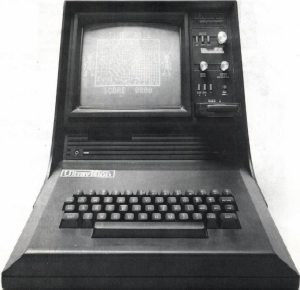 |
|
In addition to providing two 16-position arcade style joysticks and dual stereo headphone jacks, the Ultravision VAS was advertised as
being a compatible monitor for CCTV systems (home security) as well as for personal computers released by Apple, Radio Shack and Texas
Instruments. The optional Master Keyboard module would allow the user to directly access the native Microsoft Basic programming
language, with 64 KB of RAM to support home computing functions/programs. These additional benefits were somewhat attractive, but the
targeted audience was the video gamer, where software reigned supreme. The Ultravision VAS would have proprietary software and enhanced graphics and game play compared to its competitors. 12 new titles (see list below) would be released in conjunction with the debut of this system in 1983. In an effort to combat existing market leaders and gain market share, two software modules were to be available to enable Atari 2600 and ColecoVision compatibility with the Ultravision VAS. The Ultravision Video Arcade System faded into oblivion during the summer of 1983. It is reported that the company did not have the financial wherewithal to complete this advanced multimedia machine. It is not known whether an actual prototype console was ever produced, but based on the amount of detail contained in the published images it is definitely plausible that some working units may have been produced. |
|
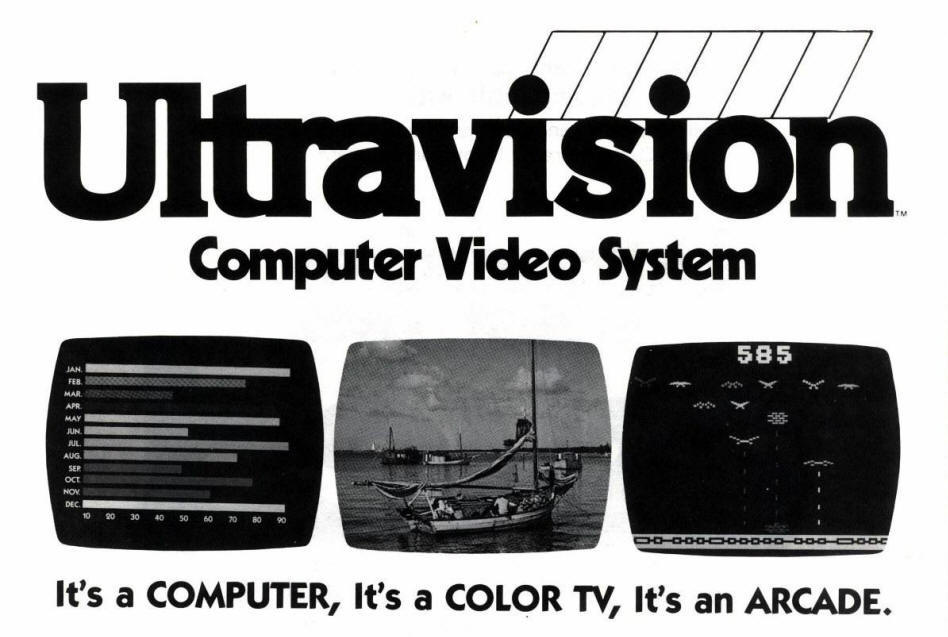 |
|
|






 2010s - NOTES
2010s - NOTES


 OTHER
MEDIA
OTHER
MEDIA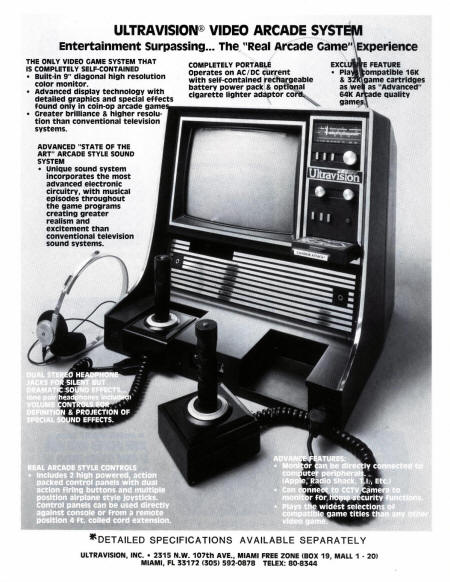
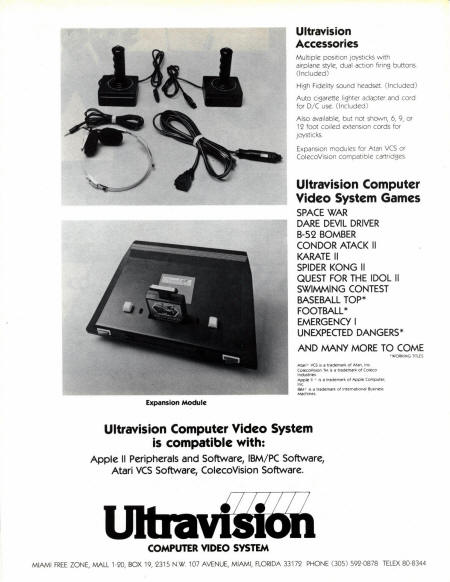
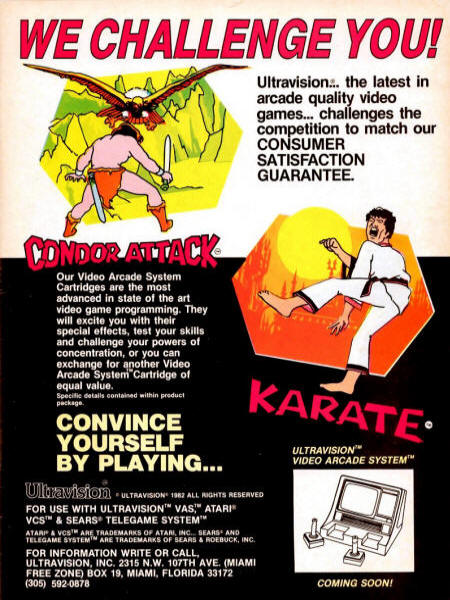
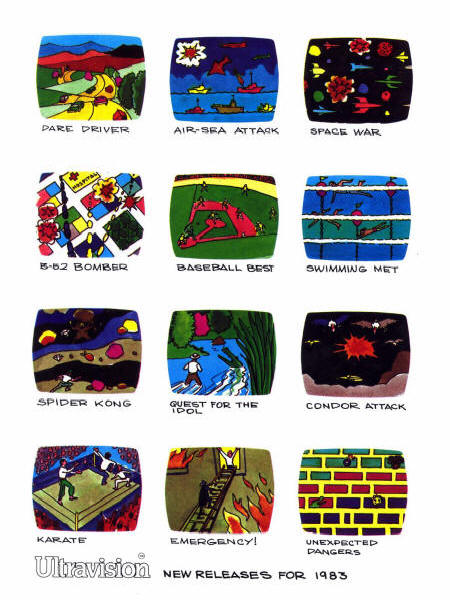
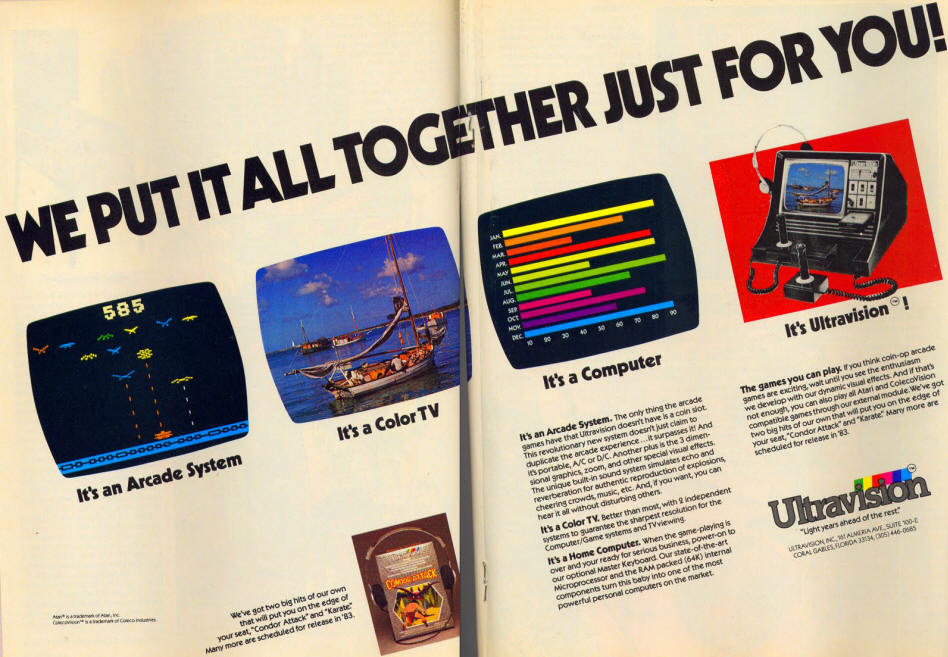
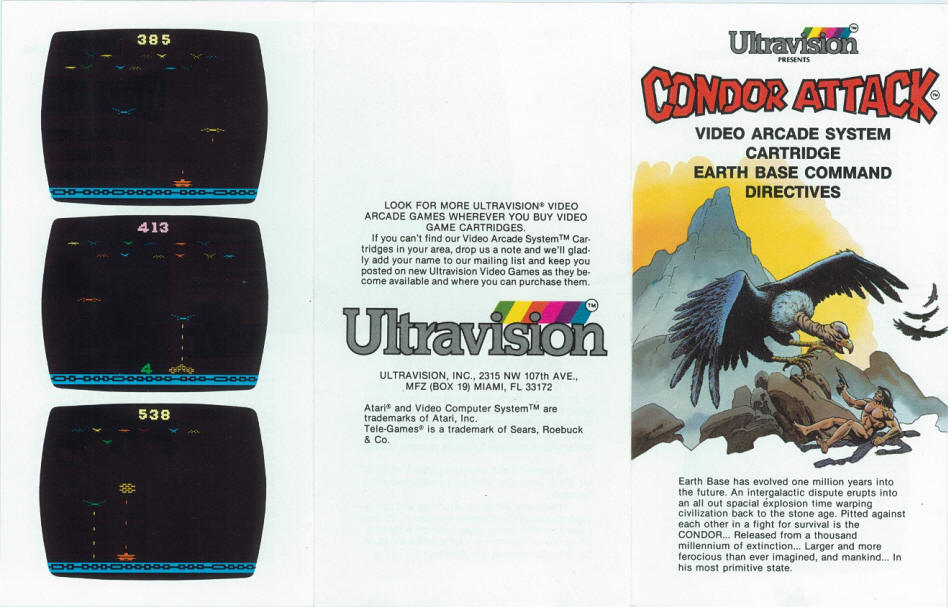
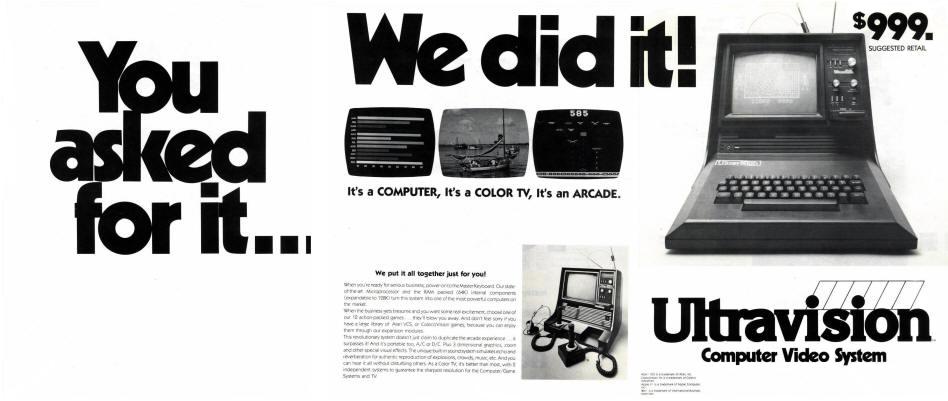
 WEB RESOURCES
WEB RESOURCES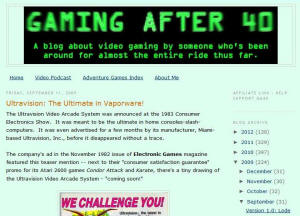
 DISCUSS
DISCUSS